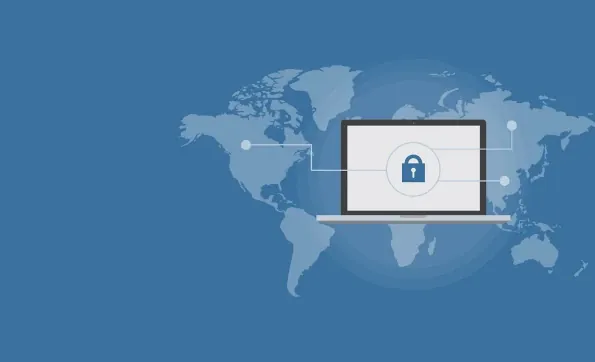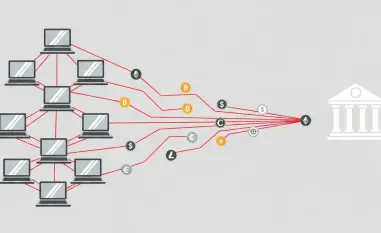The latest MITRE ATT&CK Evaluation, now in its sixth round, provided a comprehensive assessment of various cybersecurity vendors’ capabilities in detecting, responding to, and defending against sophisticated cyber threats. The threats focused on ransomware variants LockBit and Clop, as well as malware linked to North Korean threat groups targeting macOS devices. The evaluation’s results offer valuable insights into the current state of cybersecurity technologies and their effectiveness in real-world scenarios. As cyber threats continue to evolve, understanding how well existing cybersecurity solutions can cope with these threats is paramount for both vendors and the organizations that rely on them.
The Significance of MITRE ATT&CK Evaluations
MITRE’s ATT&CK framework has long been a cornerstone in understanding and modeling cyber threats. The latest evaluations involved three distinct attack scenarios, encompassing 16 steps and 80 sub-steps, which were designed to mimic real-world attacks in a controlled environment. This approach provides a realistic gauge of each vendor’s cybersecurity solutions, acting as a more accurate assessment than traditional vendor claims or industry analyst reports. By simulating real attacks, MITRE allows vendors to showcase their products’ strengths and reveal any potential weaknesses.
The evaluation’s focus on LockBit and Clop ransomware, along with malware linked to North Korean threat actors, underscores the importance of addressing these notorious threats. LockBit has become one of the most pervasive ransomware variants globally, showing robust tactics and techniques. Clop ransomware gained significant infamy following a high-profile hack involving Progress Software’s MOVEit file transfer software. North Korean threat groups continually evolve their strategies, increasingly targeting macOS systems to circumvent international sanctions and fund their weapons programs. This makes the diversity of threats covered in the evaluation particularly relevant.
Performance Highlights of Leading Vendors
Several vendors excelled during the latest MITRE ATT&CK Evaluations, showcasing their advanced cybersecurity capabilities. Cynet, for example, achieved a 100% detection and protection score. Aviad Hasnis, CTO of Cynet, noted that this performance highlights how smaller service providers and organizations can now access enterprise-grade capabilities at a more affordable cost and with fewer resources required for maintenance. The achievements of Cynet demonstrate the potential for smaller entities, such as Managed Service Providers (MSPs), Managed Security Service Providers (MSSPs), and small-to-midsize enterprises (SMEs), to bolster their cybersecurity defenses without an extensive financial burden.
Sophos also demonstrated significant success in the evaluations. Their extended detection and response (XDR) solution scored 100% in detecting, analyzing, and describing activity related to Clop and LockBit ransomware threats, and 95% in analyzing the North Korean macOS attack. Paul Murray, senior product marketing director at Sophos, praised these results as indicative of the robustness of their cybersecurity solutions. Similar to Cynet, SentinelOne’s Singularity Platform achieved a 100% score in areas such as attack detections and the recognition of attack techniques across major operating systems, including Windows, Linux, and macOS. The platform demonstrated no delays in detection across the simulated attack scenarios, showcasing its capabilities.
Challenges and Criticisms of Evaluation Methodology
Despite the positive outcomes witnessed by many vendors, some expressed disagreement with the evaluation methodology employed by MITRE. Karthik Selvaraj, partner director for Microsoft’s Defender XDR research team, voiced concerns regarding the protection part of the evaluation. Selvaraj argued that the micro-testing methodology failed to accurately represent real-world cyber threats, which often involve lateral movement within organizations by progressively gaining access to identities and privileges. He noted that a broader range of signals is essential to differentiate between benign and malicious activities.
Selvaraj’s critique brings attention to the ongoing debate within the cybersecurity community about the best ways to evaluate and enhance cybersecurity solutions. The balance between protection and operational requirements is delicate and complicated, with no single approach universally accepted or endorsed. The criticism implies that while MITRE’s evaluations provide valuable insights, they might also have some limitations requiring further consideration and improvement.
Democratization of Advanced Cybersecurity Capabilities
The overarching theme emerging from the latest MITRE ATT&CK Evaluations is the democratization of advanced cybersecurity capabilities. Smaller organizations, including SMEs and service providers, often grapple with expanding IT environments and the accumulation of isolated standalone solutions. This situation leads to increased costs, complexity, and heightened potential vulnerabilities. Aviad Hasnis of Cynet pointed out that smaller enterprises and managed service providers frequently lack the necessary personnel and resources to consistently implement, integrate, and manage these tools effectively, diverting focus from essential revenue-generating activities.
The strong performance of vendors like Cynet in the evaluations is a positive indicator. It shows that enterprise-grade protection is now more accessible to smaller entities, allowing them to maintain strong cybersecurity defenses while concentrating on their core business objectives. This democratization is pivotal in the ongoing battle against cyber threats, ensuring that even smaller players in the market can implement robust security measures without overwhelming resource allocation.
Continuous Improvement and Adaptation in Cybersecurity
The latest MITRE ATT&CK Evaluation, now in its sixth iteration, provided an in-depth assessment of numerous cybersecurity vendors’ capabilities in detecting, responding to, and defending against advanced cyber threats. This year, the evaluation focused on ransomware variants such as LockBit and Clop, alongside malware associated with North Korean threat groups targeting macOS devices. These results offer invaluable insights into the current landscape of cybersecurity technologies and their real-world effectiveness. As cyber threats continue to change and become more sophisticated, understanding how well existing cybersecurity solutions can manage these threats is crucial for both vendors and the organizations that depend on them. The findings help identify strengths and weaknesses in the approaches employed by various vendors, serving as a guide to enhancing security measures. This ongoing evaluation is essential for staying ahead in the constantly evolving world of cybersecurity, highlighting the importance of adaptive and resilient security strategies to protect sensitive data and systems from malicious actors.













